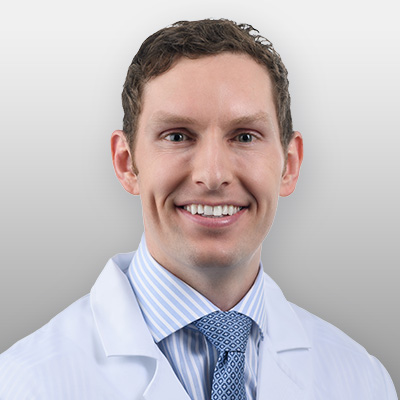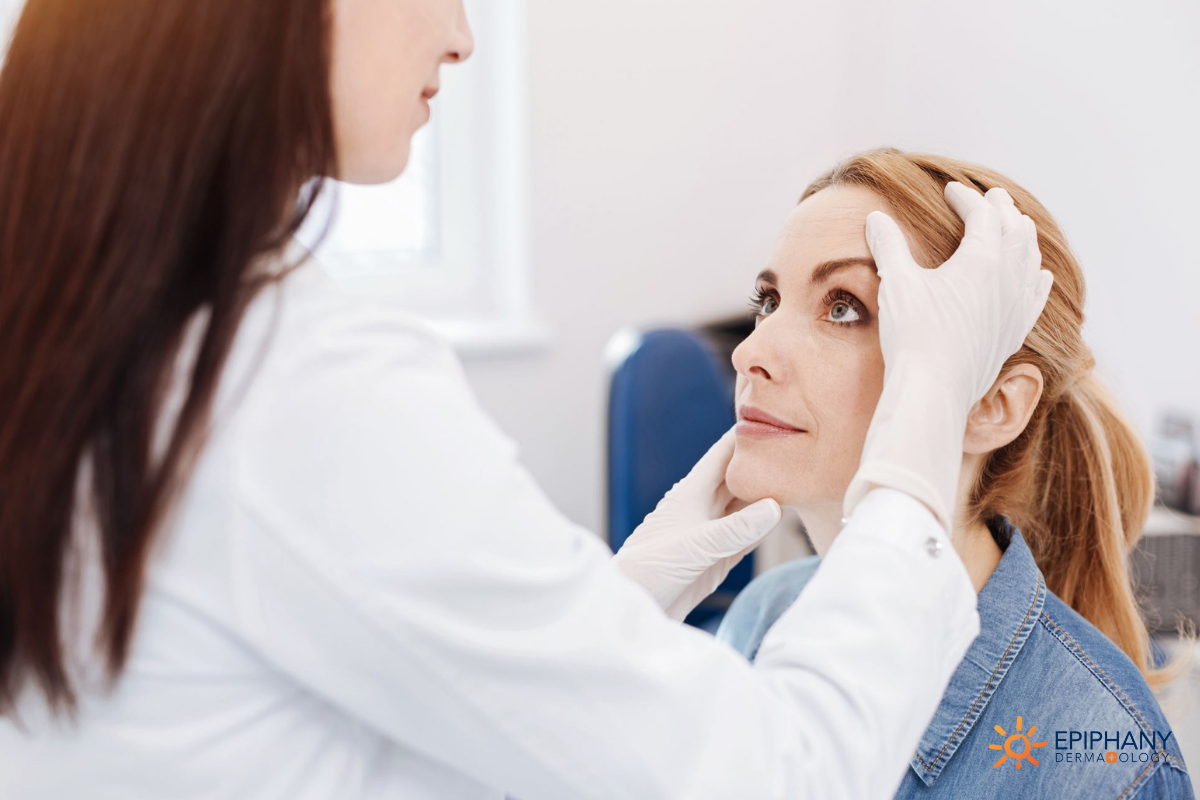If you’re considering Mohs surgery on your face, effectively treating your skin cancer is the main concern. However, you likely also have cosmetic concerns.
While our primary goal as Mohs surgeons is to eliminate the cancer entirely, we also take reconstruction very seriously for the best aesthetic and functional results. We want to you to be cancer-free and develop a reconstructive approach that works best for you.
If you’re considering Mohs surgery on your face, here’s what you need to know about Mohs reconstruction.
Does Every Patient Need Reconstruction After Mohs Surgery on the Face?
Not every patient needs reconstruction after their surgery, but for many, it’s the best choice. We opt for reconstructive surgery based on patient preferences and the specific anatomic location. We consider the type of closure needed, the local movement of the tissues, the crucial tissue functions, and how scar placement will affect long term aesthetic and functional outcomes.
In my experience, patients heal faster (and often better) with reconstruction than they do without it. For example, when Mohs surgery is done on the rim of the nose, the eyelid, or the ear, we usually opt for reconstructive surgery. Each of these areas have a “free margin,” meaning it’s near the edge of the skin. If the defect heals without reconstruction, it can contract when the scar forms and distort the normal appearance of the area. A wide range of reconstructive options may be used including small side-to-side linear repairs, flaps, grafts, and various combinations of these.
When Does a Patient Decide If They Want Facial Reconstruction?
Choosing reconstruction after Mohs surgery on the face is a delicate balance between option and necessity. A good doctor will discuss your options with you up front and let you know what to expect based on his/her experiences.
For example, when tumors are removed on the rim of the nose, defects will notch the nose if it is not reconstructed. So, I discuss potential reconstructive options with patients needing Mohs surgery on the nose from the beginning of the process. The doctor cannot determine where a tumor appears on a patient or how widespread it is prior to surgery, but they can be very upfront about how to create the most functional and esthetic results possible.
Importantly, for basal cell carcinoma or rare tumors like the microcystic adnexal carcinoma (or MAC), tumors can be up to five times larger than they appear. That means that the defect may be larger than the surgeon or the patient anticipates. In these cases, a different reconstructive approach than originally planned may be needed. The surgeons may need to adapt the reconstruction during the operation to create the best outcome for the patient.
As a patient, you have a say in your reconstructive options, but you should also choose a surgeon you trust. Based on their experience, they’ll be able to advise you on what reconstruction will provide the best outcome for your Mohs surgery. I always say that the length of the scar or the size of the reconstruction is not an indicator of long-term results. But trying to minimize the reconstruction just to make a “smaller scar” can lead to an undesirable result. Hence, we use our training and experience to reconstruct each defect uniquely for best long-term results.
How Extensive Is Facial Reconstructive Surgery?
“Reconstruction” is a broad term (often associated with plastic surgery) that refers to everything from reconstructive surgeries to cosmetic augmentations. Likewise, there is a wide range of what facial reconstruction might entail. Reconstruction after Mohs surgery can range from a small closure stitched into a wrinkle to a large flap with multiple sutures in different areas of the face.
Don’t focus on the size of the reconstruction when considering your options. What matters most is the quality of the reconstruction. Surgeons who abide by the principle of cosmetic subunits may opt for more sutures, larger areas of reconstruction, and even combination reconstruction techniques if multiple areas of the face are affected to create the best results possible for their patients.
They’ll place suture lines in preferential areas where natural lines already occur (where the lip meets the cheek, the nose meets the cheek, or the ear meets the face). Yes, there may be more sutures initially, but there will also be better long-term healing that won’t distort the tissue.
How Long Does It Take to Heal From Reconstruction After Mohs Surgery?
Healing from Mohs reconstructive surgery is a process that varies depending on the extent of the surgery. For patients with closures on the face, sutures are removed in five to seven days. Patients who needed a skin graft have their sutures removed within two weeks. To some patients, the scar is more raised than they expected. This is intentional. When I suture, I create a raised suture line called an eversion. Over time, scars tend to contract and depress. By beginning with a raised line, we account for the falling maturation that will take place back to the normal skin appearance.
The majority of patients are pleased with their results within a month. However, the scar will continue to fade, and it can take up to a year to see the final results of the healing process.
Should I Expect Facial Swelling After Mohs Surgery or Other Side Effects?
Swelling is a potential side effect of Mohs surgery depending on the area of the removal. For example, if the patient had significant surgery on the eyes or upper nose, they may have swelling from the Lidocaine that causes a bruised or black eye. Because of that swelling, we do not recommend the patients drive themselves home when the tumor is on the central face.
We also advise patients not to exercise or engage in other activities that would raise their blood pressure. An increase in blood pressure can result in bleeding, which can cause a Hematoma under reconstructed skin. In some cases, this needs to be removed. Increased activity also increases the chances of popping stitches — which would obviously interfere with the healing process.
What Should Patients Do After Mohs Surgery and Reconstruction?
Patients should keep the bandage on for 24-48 hours to allow pressure to be put on the wound. When they remove it, we recommend applying a diluted white vinegar solution on the wound. It does not burn and maintains an antibacterial environment. We recommend this rather than peroxide which tends to harm normal tissue.
We also recommend applying petrolatum (Vaseline) instead of antibiotic cream to the wound. Many patients have an allergic reaction to antibiotic creams. These reactions can create a redness that makes the wound look infected. Petrolatum, however, is mostly well-tolerated and keeps the wound moist for optimal healing.
If patients have had a significant flap or graft, we will have longer discussions with them prior to the surgery about optimal care for their recovery. These patients may have to sleep upright and take several weeks to recover rather than the standard one-to-two-day recovery period.
We give them verbal and written detailed instructions, and if accompanied by family or friends, we have this discussion together so they can be aware of the team approach to wound care.
While eliminating cancer is the primary goal of Mohs surgery, cosmetic concerns are legitimate as well. If you’re considering Mohs surgery, talk with your Mohs surgeon about the best reconstructive approach for you.

Dr. Stan Tolkachjov is a board-certified dermatologist in Frisco and Rockwall, TX. He has a particular interest in skin cancers and rare adnexal malignancies, Mohs surgery and complex facial reconstruction, pyoderma gangrenosum, and neutrophilic dermatoses. In his spare time, Dr. Tolkachjov enjoys spending time with his family, trivia, sports, travel, and mentoring students, residents, fellows, as well as sharing ideas with his colleagues to improve patient care.

